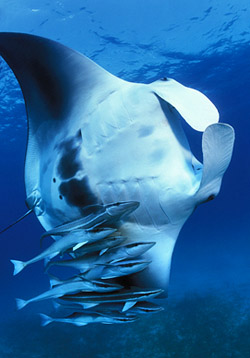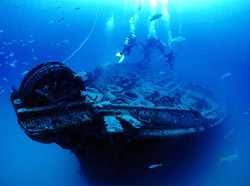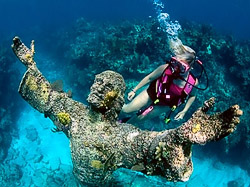KEYS-BASED PROS SHARE SECRETS HOW TO TAKE BETTER UNDERWATER PHOTOS
Images that reveal supernatural colors and sometimes eerie, mysterious shapes are created when you photograph the underwater world of the Florida Keys National Marine Sanctuary.
With camera prices dropping, more divers are adding photography to their dive plan.
Some of the most-published underwater photographers in the world make their home in the Keys and their advice can help every diver take better pictures.
Stephen Frink of Key Largo, probably the world's most frequently published underwater photographer and author of the popular coffee table book Wonders of the Reef, tells new photographers to "find the sweet spot" in their equipment.
"Each primary lens or supplementary lens has an ideal 'sweet spot' where performance is best for underwater photography," said Frink (stephenfrink.com). "Be aware of the lens' minimum focus in both normal and close-up modes because beyond four or five feet, none of these cameras [point-and-shoot models] delivers good sharpness, color or resolution, which is true of underwater photography in general."
Concurring with Frink is Tom Stack who emphasizes the importance to get close and personal with their subsea photographic targets.
"Beginners tend to get not as close to their subjects as they need to," said Stack (tomstackphoto.com) of Key Largo.
Stack's photos have been published in National Geographic, Outside, Travel & Leisure and the Encyclopedia Britannica. He and his wife Therisa also teach a popular series of 3-day Intensive Mini-Workshops to beginners and advanced underwater photographers.
"Have patience," he said. "Take your time, work in close. And keep your bubbles out of the shot."
Stack thinks beginning photographers are better off in shallow water because of the greater availability of natural ambient light. "A lot of pretty stuff can be found in eight to fifteen feet of water so you don't necessarily have to go deep," he said.
One of the biggest problems new underwater photographers face is back scatter - the floating particulate matter than makes a colorful tropical fish look like it's floating in a snowstorm.
Stack said that the best solution is to get a small relatively inexpensive strobe that, if the camera will accept it, can be mounted or held a foot or so to the side of the lens. "The trick is to get some left-right distance between the strobe and the lens," he said.
Clara Taylor (clarataylor.com), a working pro out of Key West, added that when side lighting isn't possible, a light or busy background sometimes helps with back scatter.
Both pros said that good buoyancy control is critical to protect the reef and to help get sharp focus.
"You want to get the eyes and face looking at you before your subject swims away," said Taylor.
Three final tips: Frink says it is important to save digital files intelligently; use DVDs instead of CDs or, ideally, redundant hard drives. Stack reminds beginners in his workshops to shoot both horizontals and verticals (i.e., portrait and landscape orientation). Taylor tells new photographers not to forget maintenance of their camera's O-rings.

Stephen Frink shot this manta ray, accompanied by remora fish, as it glides off Key Largo. (www.stephenfrink.com)

Clara Taylor photographed scuba divers above the Cayman Salvager wreck off Key West. (www.clarataylor.com)

Tom Stack photographed his wife Therisa at the Christ of the Deep statue, a classic Keys underwater icon situated off Key Largo (www.tomstackphoto.com)
